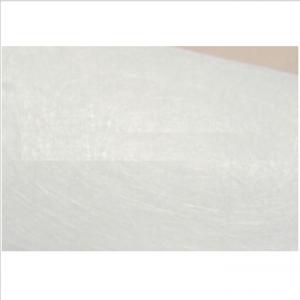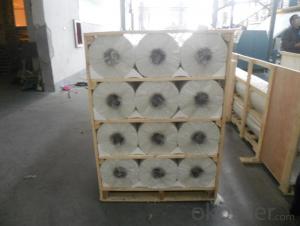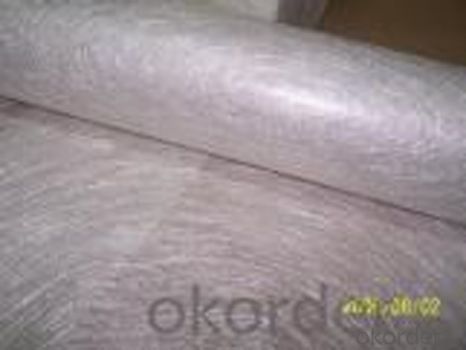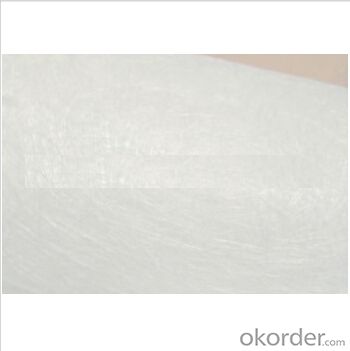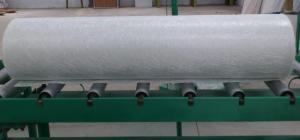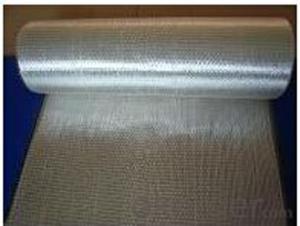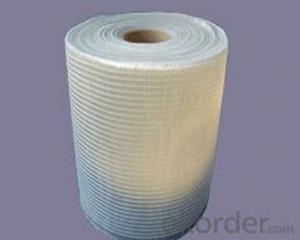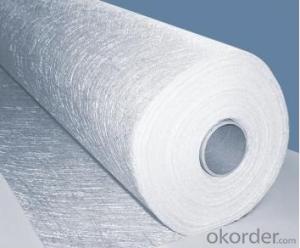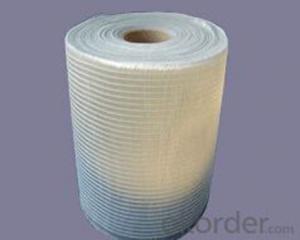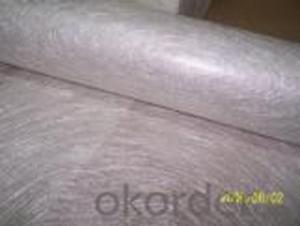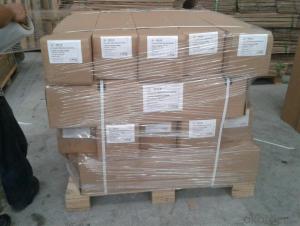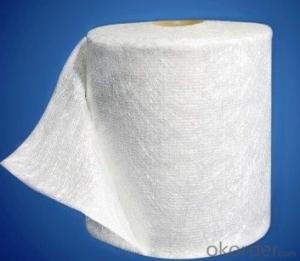Fiberglass Mat Tissue C-Glass Stitch Chopped Strand Mat 300gsm, 50-2400mm
- Loading Port:
- Shanghai
- Payment Terms:
- TT or LC
- Min Order Qty:
- 1000 kg
- Supply Capability:
- 20000 kg/month
OKorder Service Pledge
OKorder Financial Service
You Might Also Like
Process
Fiberglass stitch chopped strand mat is the mat made of fiberglass roving which is at first be cut into certain length and evenly unfolded in all directions and then stitched with polyester yarn.
Properties
• Fiberglass no certain direction, good homogeneity.
• No powder or emulsion; sink quickly and easy to operate
• High tensile strength, easy to operate
• Good impact strength of finished products
Applications
Mainly be used as reinforced materials in the composite material industry.
• Matrix: unsaturated polyester resin, vinyl ester resin, epoxy resin and phenolic resin etc.
• Craft: winding, pultrusion, RTM, molded, hand lay up, etc.
• Ultimate products: Liner layer of tube, pultruded profiles, FRP body of boat, insulation board
Specifications
specifications | Fibre type | Areal weight | Width |
(g/㎡) | (mm) | ||
EMK 300 | E-Glass | 300 | 50-2400 |
EMK380 | E-Glass | 380 | 50-2400 |
EMK450 | E-Glass | 450 | 50-2400 |
CMK 300 | C-Glass | 300 | 50-2400 |
CMK380 | C-Glass | 380 | 50-2400 |
CMK450 | C-Glass | 450 | 50-2400 |
Packaging: Wrapped in PVC and placed within a cardboard carton. | |||
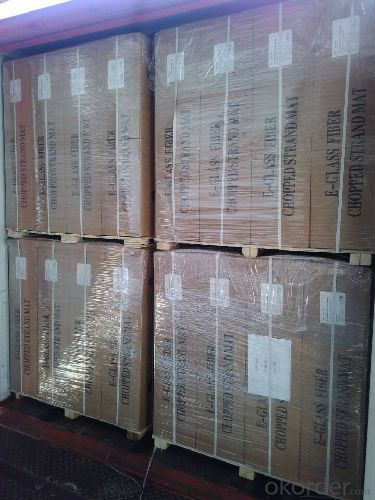
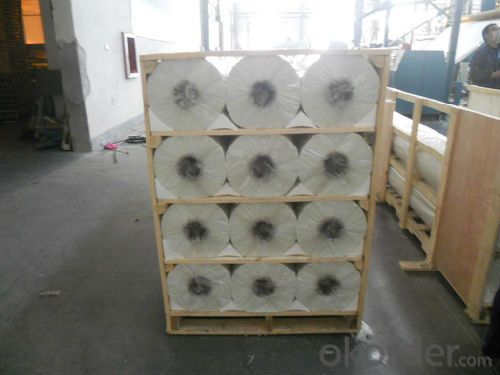
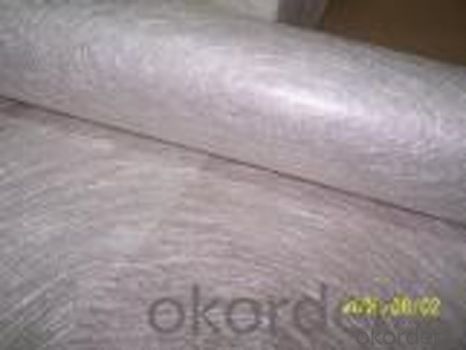
FAQ
a.Pacage
Each CHEMICAL FIBER GRIDDING CLOTH is wound onto a paper tube The roll is wrapped up with plastic film,and then packed in a cardboard box. The rolls can be vertically or horizontally placed. For transportation, the rolls can be loaded into a container directly or on pallets.
b.Product storage:
Unless otherwise specified, CHEMICAL FIBER GRIDDING CLOTH should be stored in a dry, cool and rain-proof area. It is recommended that the room temperature and humidity should be always maintained at 15℃~35℃ and 50%~75% respectively.
- Q: Can fiberglass mat tissue be used for repairing fiberglass structures?
- Yes, fiberglass mat tissue can be used for repairing fiberglass structures. Fiberglass mat tissue is a versatile material that is commonly used in the construction and repair of fiberglass structures. It is designed to provide strength, stability, and reinforcement to the damaged areas of the structure. The mat tissue is typically applied with resin, which helps to bond the fibers together and create a durable repair. It is especially effective for repairing cracks, holes, and other types of damage in fiberglass surfaces. Overall, fiberglass mat tissue is an excellent choice for repairing fiberglass structures due to its strength, flexibility, and ability to conform to various shapes and sizes.
- Q: How is fiberglass mat tissue used in the production of windshields?
- Fiberglass mat tissue is a crucial component in the production of windshields due to its unique properties and functions. When manufacturing windshields, the fiberglass mat tissue is used as a reinforcement material to enhance the strength and durability of the glass. During the production process, a layer of fiberglass mat tissue is inserted between two layers of glass to create a laminated structure. This layer acts as a barrier, preventing the glass from shattering into small dangerous pieces upon impact. It helps to hold the glass together, providing safety to the vehicle occupants. The fiberglass mat tissue serves as a reinforcing material, improving the mechanical properties of the windshield. It enhances the impact resistance, making the windshield less prone to cracks or chips from stones, debris, or other objects that may hit it while driving. This reinforcement also adds structural integrity to the windshield, allowing it to withstand extreme weather conditions and vibrations without compromising its functionality. Furthermore, the fiberglass mat tissue helps to reduce noise transmission and vibrations. It has sound-damping properties, which contribute to a quieter and more comfortable driving experience by reducing external noise from entering the vehicle cabin. Additionally, the use of fiberglass mat tissue allows for the production of curved windshields. The flexibility of the material enables it to conform to different shapes and contours, allowing manufacturers to create windshields with customized designs and improved aerodynamics. In summary, fiberglass mat tissue plays a vital role in the production of windshields. Its reinforcement properties enhance the strength and impact resistance of the glass, providing safety to the vehicle occupants. It also contributes to a quieter driving experience and enables the production of curved windshields with improved aerodynamics.
- Q: Can fiberglass mat tissue be used for making lightweight panels?
- Fiberglass mat tissue is capable of being utilized in the creation of lightweight panels. Comprised of delicate glass fibers that have been bound together with a resinous binder, this thin and lightweight material is commonly employed in the construction field to bolster surfaces and enhance the strength of diverse applications. When applied to panel manufacturing, fiberglass mat tissue proves to be an excellent selection for generating lightweight panels. The material's slim and pliable nature permits it to be seamlessly integrated into panels without imposing substantial weight. Furthermore, fiberglass mat tissue boasts exceptional strength properties, which contribute to the panels' overall structural integrity. Moreover, fiberglass mat tissue furnishes the panels with insulation and soundproofing capabilities, making them ideal for situations necessitating these attributes. Additionally, the material exhibits resistance towards corrosion and moisture, thereby augmenting the panels' durability and longevity. In summary, fiberglass mat tissue is a versatile and lightweight material that can be effectively employed in the production of lightweight panels. Its strength, flexibility, insulation properties, and resistance to corrosion and moisture render it a suitable choice for a range of applications in industries such as construction, automotive, aerospace, and marine.
- Q: How does the weight of fiberglass mat tissue affect its performance?
- The performance of fiberglass mat tissue is significantly affected by its weight. The weight of the tissue indicates the amount of glass fibers per unit area. Generally, a higher weight indicates a greater concentration of fibers, which results in improved strength and durability. To begin with, a heavier fiberglass mat tissue provides better tensile strength. The increased number of fibers in the tissue enables it to withstand higher levels of stress and strain without breaking or tearing. This makes it ideal for applications that require a high load-bearing capacity, such as structural components in the construction or automotive industries. Additionally, the weight of the tissue also impacts its stiffness and rigidity. A heavier mat tissue offers better dimensional stability, meaning it will maintain its shape and form even when subjected to external forces. This is crucial in applications where the material needs to retain its structural integrity, such as in boat hulls or wind turbine blades. Moreover, the weight of the fiberglass mat tissue affects its thermal and acoustic insulation properties. A higher weight is usually associated with better insulation capabilities, as the increased fiber density enhances the material's ability to trap air and reduce heat transfer or sound transmission. This makes it suitable for applications that require effective insulation, such as in buildings or industrial equipment. Finally, the weight of the fiberglass mat tissue can impact how easily it can be handled and installed. A lighter tissue may be more flexible and easier to manipulate, making it simpler to fit into complex shapes or tight spaces. Conversely, a heavier tissue might require additional support or equipment during installation. In conclusion, the weight of fiberglass mat tissue has a direct influence on its performance characteristics, including tensile strength, rigidity, insulation properties, and ease of handling. Therefore, it is crucial to consider the intended application and the desired performance requirements when selecting the appropriate weight of fiberglass mat tissue.
- Q: What is the typical width of fiberglass mat tissue rolls?
- The typical width of fiberglass mat tissue rolls can vary depending on the specific manufacturer and intended application. However, in the construction and insulation industries, fiberglass mat tissue rolls are commonly available in widths ranging from 1.22 meters (4 feet) to 2.44 meters (8 feet). These dimensions are often chosen to align with standard building materials and construction practices. It is important to note that there may be variations in width options depending on the region or supplier, so it is advisable to consult with the manufacturer or supplier for the specific width requirements for a particular project.
- Q: How does fiberglass mat tissue compare to other types of insulation materials?
- Fiberglass mat tissue is a type of insulation material that has its own unique characteristics and advantages when compared to other insulation materials. Firstly, fiberglass mat tissue is known for its excellent thermal insulation properties. It has a low thermal conductivity, meaning it effectively reduces the transfer of heat between the inside and outside of a building. This helps to keep buildings cooler in the summer and warmer in the winter, leading to energy savings and increased comfort. In addition to its thermal insulation capabilities, fiberglass mat tissue also offers excellent sound insulation. It helps to reduce noise transmission through walls and floors, creating a quieter and more peaceful indoor environment. This is particularly beneficial in commercial buildings, where noise reduction is important for productivity and customer satisfaction. Furthermore, fiberglass mat tissue is a lightweight and flexible material, making it easy to handle and install. It can be easily cut to fit around obstacles such as pipes and ducts, ensuring a tight and efficient insulation barrier. This ease of installation saves time and labor costs during construction or renovation projects. Another advantage of fiberglass mat tissue is its fire resistance. It is a non-combustible material, meaning it does not contribute to the spread of fire. This is especially crucial in buildings where fire safety is a top priority, such as hospitals, schools, and residential properties. Moreover, fiberglass mat tissue is durable and long-lasting. It does not degrade or lose its insulation properties over time, ensuring consistent energy efficiency and performance for many years. This durability makes it a cost-effective insulation choice, as it reduces the need for frequent replacement or maintenance. Lastly, fiberglass mat tissue is environmentally friendly. It is made from recycled glass and sand, which reduces the demand for raw materials. Additionally, it is recyclable at the end of its lifespan, further reducing waste and promoting sustainability. Overall, fiberglass mat tissue offers excellent thermal and sound insulation, ease of installation, fire resistance, durability, and environmental benefits. While other insulation materials may have their own advantages, fiberglass mat tissue is a versatile and reliable option for various applications.
- Q: What is the maximum temperature resistance of fiberglass mat tissue?
- Depending on its intended use and the specific product, the maximum temperature resistance of fiberglass mat tissue can differ. Nevertheless, fiberglass mat tissue is widely recognized for its exceptional thermal resistance properties. Typically, it can endure temperatures ranging from 400 to 600 degrees Fahrenheit (200 to 315 degrees Celsius) without experiencing significant structural or performance deterioration. As a result, it is well-suited for a broad array of high-temperature applications in industries such as automotive, aerospace, construction, and manufacturing, including insulation, fireproofing, and thermal insulation. It's worth noting that the precise maximum temperature resistance may vary depending on factors like the thickness, composition, and specific manufacturing processes employed for the fiberglass mat tissue. Therefore, it is always advisable to refer to the manufacturer's specifications and guidelines to ensure the appropriate usage and optimal performance of the product in high-temperature environments.
- Q: What are the recommended storage and handling practices for fiberglass mat tissue?
- To ensure the integrity and longevity of fiberglass mat tissue, it is necessary to adhere to a few recommended practices. 1. Storage: Fiberglass mat tissue should be stored in a clean, dry environment to prevent damage from moisture or dirt. Ideally, it should be kept indoors, away from direct sunlight and extreme temperatures. 2. Handling: Proper handling is crucial to avoid damaging the delicate material. It is advisable to wear protective gloves and safety glasses to prevent injuries. Care should be taken to handle it gently, avoiding any tears or creases that may compromise its performance. 3. Transportation: During transportation, it is essential to pack fiberglass mat tissue securely to minimize the risk of damage. Adequate protection should be provided to prevent impact or vibration. If possible, it is preferable to transport it in a dedicated vehicle or container for added safety. 4. Avoid chemical contact: Fiberglass mat tissue should not come into contact with chemicals such as acids, alkalis, or solvents. These substances can degrade and weaken the material. Clean hands should be used when handling, and contact with harmful substances should be avoided. 5. Follow manufacturer's guidelines: It is advisable to adhere to the specific recommendations provided by the manufacturer regarding storage and handling. Different manufacturers may have slightly different requirements, and following them ensures optimal performance and longevity. By adhering to these recommended practices for storage and handling, the integrity of fiberglass mat tissue can be maintained, guaranteeing its readiness for its intended use.
- Q: Can fiberglass mat tissue be used in corrosive environments?
- No, fiberglass mat tissue is not suitable for use in corrosive environments as it is not resistant to corrosion.
- Q: Can fiberglass mat tissue be used for repairing fiberglass canoes?
- Yes, fiberglass mat tissue can be used for repairing fiberglass canoes. Fiberglass mat tissue is a lightweight material that is typically used for reinforcing fiberglass structures. It is commonly used in boat repairs as it provides strength and durability to the repaired area. The mat tissue is designed to be easily molded and shaped, making it ideal for repairing curved surfaces such as canoes. Additionally, fiberglass mat tissue is compatible with polyester and epoxy resins, which are commonly used in fiberglass repairs. Therefore, it is a suitable material for repairing fiberglass canoes and will help restore the structural integrity of the damaged areas.
Send your message to us
Fiberglass Mat Tissue C-Glass Stitch Chopped Strand Mat 300gsm, 50-2400mm
- Loading Port:
- Shanghai
- Payment Terms:
- TT or LC
- Min Order Qty:
- 1000 kg
- Supply Capability:
- 20000 kg/month
OKorder Service Pledge
OKorder Financial Service
Similar products
Hot products
Hot Searches
Related keywords

